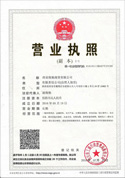Extrusion and puffing process flow of feed puffing machine
Extrusion and puffing process flow of feed puffing machine
The production process of puffed food is crushing → mixing (wetting) conditioning → conveying → feeding → extrusion puffing → shaping, cutting → baking → oiling, seasoning → packaging
1) Crushing
In order to mix the raw materials evenly during extrusion and cooking, and to fully gelatinize the starch for expansion, each material (corn should be shelled and germ removed first) is crushed to a particle size of 30-40 mesh, and the twin-screw food puffing machine is crushed to a particle size of over 60 mesh.
2) Raw material mixing
Mix different raw materials and auxiliary materials evenly in a powder mixer according to a certain proportion, and determine the amount of water added based on differences in climate, environmental temperature, and humidity. The total moisture content of the mixed raw materials should be controlled between 13% and 20%.
3) Squeezing and puffing
Squeezing is the key to the entire process, as it directly affects the texture and taste of the product. There are many variables that affect extrusion, such as the moisture content of the material, temperature, pressure, screw speed, type of raw material, and its proportion during the extrusion process.
Raw materials with low amylose content have a higher alpha degree after puffing, and the puffing effect of the feed puffing machine is better. The different protein and fat contents in the raw materials can also affect the quality of puffing. Materials with high protein content have low swelling during extrusion; When the fat content exceeds 10%, it will affect the expansion rate of the product. A certain amount of fat can improve the product, texture, and taste. Different types and models of extruders have different better extrusion process parameters.
4) Plastic surgery and cutting
After extruded from the mold hole, the puffed material is cut into shape or pulled onto the forming machine by a rotating tool near the mold hole.
5) Baking
The extruded semi-finished product has a high moisture content and needs to be further baked in a tunnel oven through a belt conveyor to reduce the moisture content to below 5% to extend the shelf life. At the same time, a special aroma is produced after baking to improve quality.
6) Seasoning
In a barbecue restaurant, vegetable oil and cream mixed in a certain proportion are heated to around 80 ℃, and the oil is evenly sprayed onto the surface of the material that rolls with the rotation of the seasoning machine through an atomizing nozzle. The purpose of spraying is to improve the taste; The second is to make the material easily stick to the seasoning.
Then spray the seasoning and evenly spread the powdered seasoning on the surface of the rolled material through a powder sprayer equipped with a propeller, to obtain the finished product. To prevent moisture and ensure crispness, seasonings should be packaged immediately.






